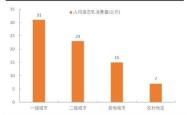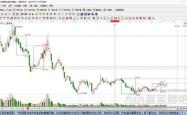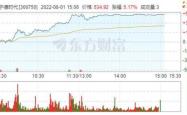股票数据抓取工具
Title: Understanding Stock Data Collection Methods
In the realm of finance, stock data collection is the backbone of informed decisionmaking for investors, analysts, and researchers alike. Efficient and accurate data collection is crucial for understanding market trends, identifying investment opportunities, and mitigating risks. Let's delve into the methods and tools employed in stock data collection:
1. Data Sources:
Exchange Feeds:
Major stock exchanges like NYSE, NASDAQ, and others provide realtime data feeds. These feeds include price quotes, trade volumes, bidask spreads, and other relevant information.
Market Data Vendors:
Companies such as Bloomberg, Reuters, and FactSet aggregate data from multiple exchanges and provide comprehensive market data services.
Financial Websites:
Platforms like Yahoo Finance, Google Finance, and CNBC offer free access to basic stock data for retail investors.
APIs:
Application Programming Interfaces (APIs) provided by financial institutions or thirdparty providers enable developers to retrieve stock data programmatically. 2. Data Collection Methods:
RealTime Streaming:
Utilizing APIs or direct exchange feeds, realtime data is streamed continuously to capture uptothemillisecond changes in stock prices and volumes.
Batch Processing:
Scheduled batch processes fetch historical data at regular intervals (e.g., daily, weekly, monthly). This method is useful for trend analysis and building historical datasets.
Web Scraping:
Automated scripts extract data from financial websites. While this method is less reliable due to website layout changes and access restrictions, it can provide valuable supplementary data. 3. Data Variables Collected:
Price Data:
Opening price, closing price, high, low, and adjusted close.
Volume Data:
Total number of shares traded during a specific period.
Market Depth:
Bidask spreads, order book data, and liquidity metrics.
Fundamental Data:
Financial ratios, earnings reports, dividends, and corporate actions. 4. Challenges and Considerations:

Data Accuracy:
Ensuring the collected data is accurate and errorfree is paramount for making informed decisions.
Data Latency:
Delay in data transmission can impact trading strategies, especially in highfrequency trading environments.
Cost:
Realtime data feeds and premium market data services can be expensive, especially for individual investors or small firms.
Regulatory Compliance:
Adhering to regulatory requirements, such as GDPR or SEC regulations, when collecting and storing sensitive financial data. 5. Best Practices:
Diversify Data Sources:
Relying on multiple data sources reduces dependency and enhances data reliability.
Data Validation:
Implement robust validation processes to detect and rectify errors in collected data.
Optimize Data Storage:
Efficient data storage and retrieval systems ensure scalability and quick access to historical data.
Stay Informed:
Keep abreast of changes in market data technology, regulations, and best practices to adapt strategies accordingly.Conclusion:
Efficient stock data collection is indispensable for navigating the dynamic landscape of financial markets. By leveraging a combination of realtime streaming, batch processing, and supplementary sources like web scraping, investors and analysts can gain valuable insights to inform their investment decisions. Embracing best practices and staying abreast of technological advancements will be key to maintaining a competitive edge in the everevolving financial ecosystem.
[End of Document]
免责声明:本网站部分内容由用户上传,若侵犯您权益,请联系我们,谢谢!联系QQ:2760375052









